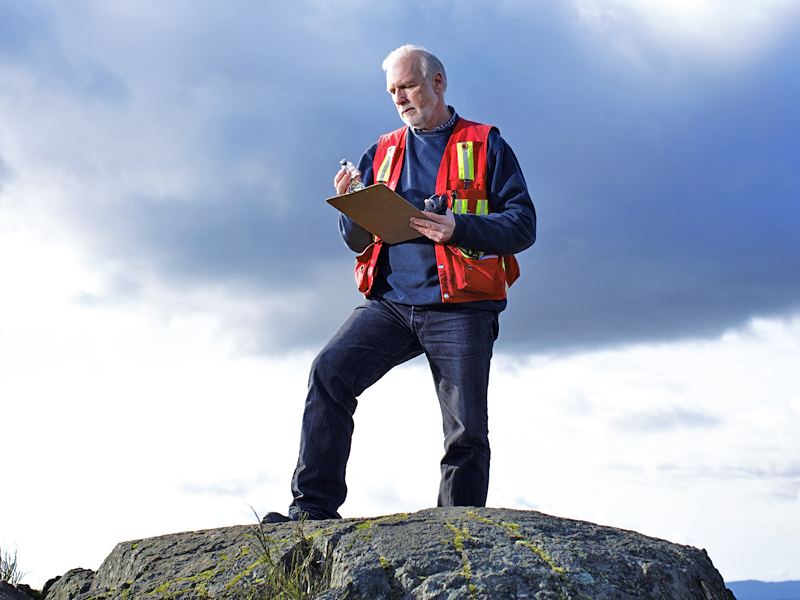Thawing permafrost and global warming
- Peigi McGillivray

Locked under the surface of Canada’s North for up to 40,000 years lies a frozen layer of permafrost. Here, organic material—the remains of plants and animals—has been deposited layer upon layer in peatlands. Covering an area of about 400,000 km2 or 37 per cent of Canada’s peatlands, this material has remained frozen since the last ice age. Dr. Michael Whiticar (earth and ocean sciences) is investigating what happens as permafrost thaws, relesaing greenhouise gases.
Permafrost does no harm to the environment while it is frozen. The problem is that Arctic temperatures are rising rapidly (around 2°C in the last two decades) and warmer temperatures mean dramatic increases in the thawing of permafrost. As the organic material thaws and decomposes, bacteria release carbon dioxide and methane—which has 21 times the warming impact of carbon dioxide—into the atmosphere. Soon, thawing global Arctic permafrost is predicted to release two billion tonnes of carbon dioxide per year— about three times the amount of carbon dioxide emitted annually by Canadians.
What is alarming is that as temperature continues to rise in the Arctic (up 5° to 7°C in this century) more methane and carbon dioxide are released—leading to even more warming. But exactly where is permafrost thawing most critical? How are such large amounts of methane and carbon dioxide released? And is it possible to slow this process?
“We know, from our previous studies of ice in Greenland, that there is 2.5 to five times more methane in the atmosphere today than ever in the past million years or more,” says Whiticar. “I am studying greenhouse gases in thawing Arctic permafrost peatlands to gather reliable information about this unprecedented global methane build-up.”
Whiticar and his colleagues are five years into their decade-long study of the geochemistry, water cycle and microbial ecology of greenhouse gases in Canada’s permafrost regions. Extended studies like Whiticar’s are needed to distinguish long-term trends from short, yearly fluctuations in weather.
“We have established four representative study areas along the McKenzie River Valley,” says Whiticar. “Anzac in northern Alberta, and Fort Simpson, Norman Wells, and Inuvik in the Northwest Territories.”
The work is not easy. The season is short, the sites are remote and the preparation is painstaking because the permafrost surface is so easily damaged, says Whiticar. “Even our footsteps could cause significant damage and invalidate our results.”
Whiticar and his team, including graduate students and post doctoral fellows, use narrow boardwalks carefully built over the fragile surface to avoid damaging it as they take readings and maintain sophisticated measuring equipment. “This infrastructure—created with colleagues from the Northern Forest Service—is invaluable in allowing us to gather accurate information year after year,” says Whiticar. “And reliable data are essential to the models that will help us predict the future climate.”
Because the deposits of organic material in the Earth’s permafrost are so vast (worldwide about 2,000 billion metric tons or about 30 per cent of the world’s active organic carbon), and temperatures are already rising, it is not clear how we could ‘put the brakes’ on thawing. “What we can do is find out as much as possible about how and where it’s happening,” says Whiticar. “We must accurately understand the processes and magnitude of these greenhouse gas emissions. Only then can our predictions be trusted by and useful to other scientists, policy makers, and especially the public.”

